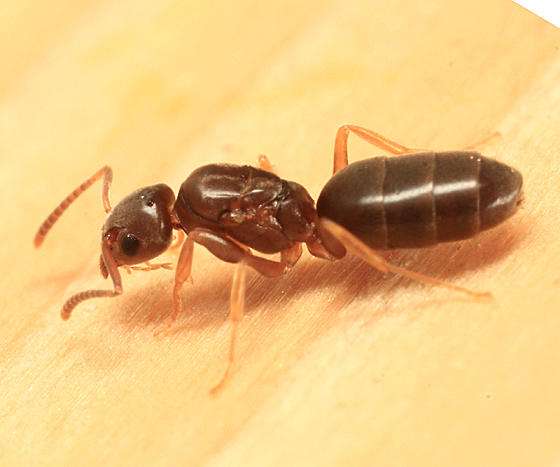
Acrobat ants, including Crematogaster scutellaris and all other Crematogaster species, go by this name. Their propensity to acrobatically raise their abdomen over their heads, especially when startled, is how they got their moniker.
Distribution
Like many other Mediterranean species, Crematogaster scutellaris is highly tolerant to temperature variations. They can readily be kept at room temperature because they don’t have particularly strict temperature needs.
Lifecycle
An ant’s life cycle has four stages: egg, larva, pupa, and adult. The queen produces millions of tiny, white or yellowish eggs, which are then developed into larvae within 2–6 weeks. Colonies can sometimes contain millions of ants, all generated by a single queen. They develop into pupae after being fed for a time ranging from a few weeks to several months. The ant does nothing while in the pupal stage; instead, it feeds and goes through a significant change into an adult bug.
Features
The red head and the black, heart-shaped abdomen of Crematogaster scutellaris make it simple to recognise. In Italy, this is the ant species that is most common.

Habitat/Damage
Ants prefer to build their nests in trees, but they can also invade already-rotting wood that has been exposed to moisture, restricting the size of their nest to the affected region. It is accompanied with fine sawdust that can be seen.
Temperature
However, this species prefers a temperature range of 21 to 25 degrees Celsius. A heat mat or a heat wire might be helpful if you live in a chilly climate or if you frequently use an air conditioner in the room where your ants are.
Humidity
Crematogaster scutellaris doesn’t have particularly high humidity requirements. The usual Mediterranean climate, with moisture levels ranging from 50% to 60%, is to their liking. They live in dead trees in the wild, some of which are entirely dry. Like many other ant species, they can wet their nest to increase the humidity level if the environment becomes too dry.
Food
Crematogaster scutellaris requires protein for the queen and her brood as well as a small amount of sugar for its workers.
You can offer them sugar water and a few drops of honey as the sugar source. They adore honey so much!
They also require a lot of protein due to their rapid rate of growth. You can give them practically any species of bug as a source of protein. They enjoy eating fruit flies, spiders, crickets, and mealworms in the wild.
Hibernation
Hibernation is necessary for Crematogaster scutellaris. From late October to early March, they spend the winter hibernating. They require at least a few months of diapause, a period of time when the queen doesn’t lay eggs biologically. The queen can only take a tranquil nap during this period, which is crucial for her health because it occurs just once a year.
For this species, a temperature of about 10 degrees Celsius is suitable for hibernating. Going much lower than this can provide problems for the colony’s long-term growth, so I wouldn’t advise doing so. If you don’t have a refrigerator, you can place the colony in the garage or basement where the temperature won’t be too high or too low.
Nest Type
Keep note that this species can spray formic acid when building or purchasing the nest! This is why I advise using an outworld with lots of ventilation holes or a cover that can be removed easily.
This could be a serious issue in huge colonies. The formic acid fumes could cause injury to the ants if the outworld doesn’t have enough ventilation and they start to spray formic acid out of fear.
Table





